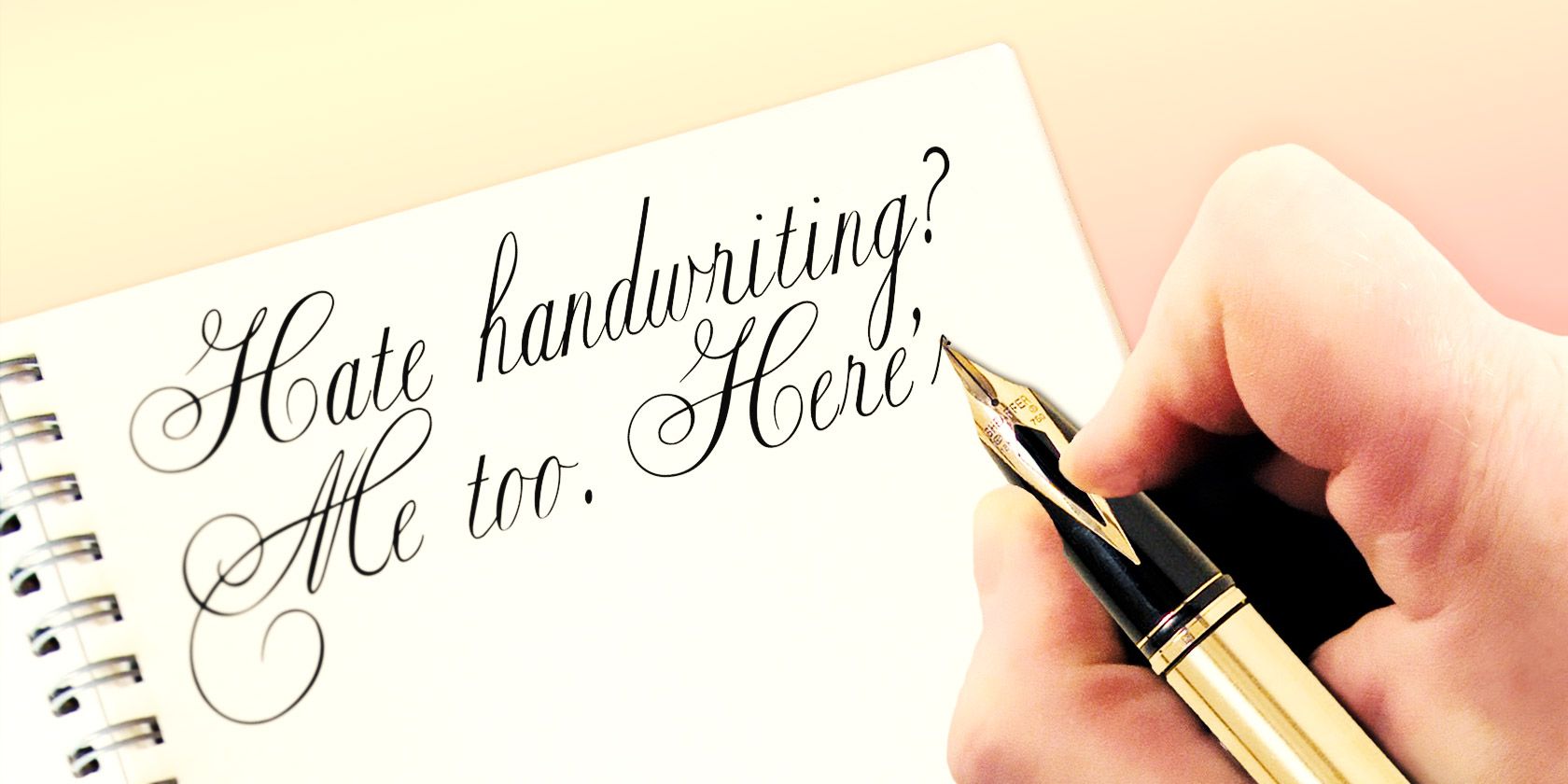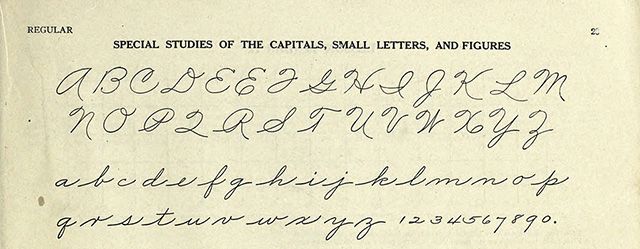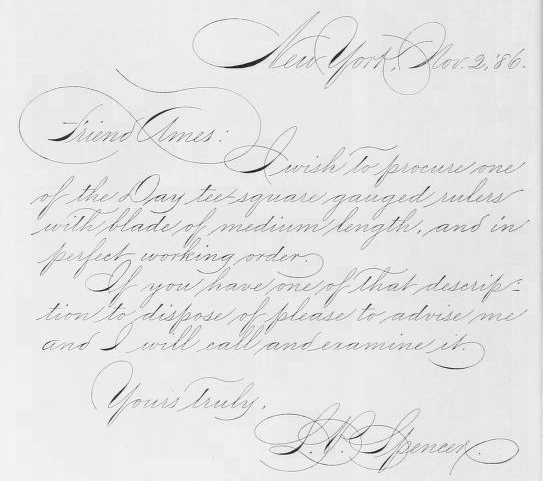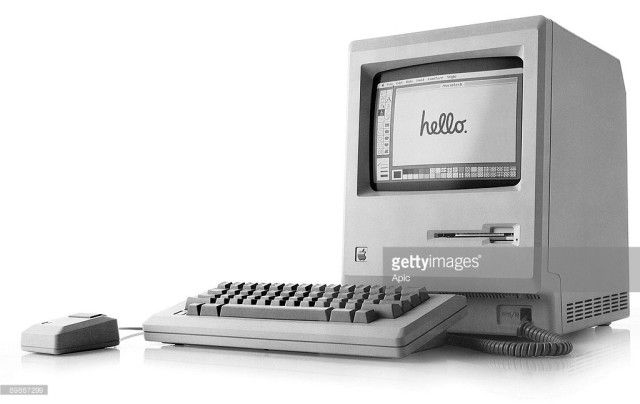As you have probably noticed, people don't write in cursive as much as they used to. Your own handwriting has probably faltered over the years, and if not, you have surely noticed handwriting of others faltering around you. 41 out of 50 states don't require handwriting to be taught in schools as of 2014. Maybe you think this is no big deal, after all, why handwrite when we can type?
As an adult with barely readable handwriting, I share your frustration. However, I think we ought to teach it to all young people in school anyway. Handwriting ought to be a standard part of non-optional art class. Kids even ought to have the chance to learn a fancier style of script than most of us were taught growing up. Here's why.
Handwriting is a Tool of Our Humanity
Jake Weidmann believes the pen offers us far more than we realize – that it's a part of our humanity. His TEDx talk here is well worth a listen, and there's some stunning work to see too.
But why should you care what he has to say about it? For starters, he's a university graduate, a talented artist, and an avid user of technology. But more importantly, he is the youngest master penman in the world, of which there are only 11 others, so he's a strong champion for this dying art.
"Maybe this will inspire me to practice my handwriting sometime," I hear you say, "But I don't see why today's kids should be forced to learn it." This is where a lot of people get stuck, arguing that class time is limited, and kids are better off typing. And my colleague Justin Pot (who wrote Cursive Writing is Obsolete; Schools Should Teach Programming Instead) correctly points out, the benefits are not the point. So, why is it important that handwriting is not left behind?
Handwriting Links us to Past Generations.
As a Canadian, I'm not going to insist that kids need handwriting to read the Declaration of Independence. Furthermore, as Justin Pot pointed out in The 4 Worst Arguments for Teaching Cursive in Schools), it was not originally written in handwriting anyway.
But the case is far from closed. Make no mistake: A fade in handwriting ability will deepen the gulf between past and future generations.
Kids ought to learn handwriting so that they can read and appreciate the occasional-but-not-extinct cursive in everyday life, like notes and journals belonging to parents or grandparents. To argue that we shouldn't bother to learn handwriting is akin to arguing that we shouldn't bother to learn history or language.
The Challenge is the Point.
Justin Pot would have you believe that benefits to fine-motor skills are trivial enough that kids could acquire them while playing Super Mario Bros for NES, instead of the arduous task of handwriting. That analogy is laughable.
Button-mashing is just not going to develop skills remotely as much as practicing controlling a pen. Handwriting requires, and develops, fine-motor skills to a much more nuanced level than any other common activity does. That's because you have to control exactly where and how hard pen meets paper. That level of nuance is important to art, which is why graphic artists pay top-dollar for graphics tablets and pens with 2048 levels of pressure sensitivity.
There's more to handwriting than physical development, too. As The New York Times reported in, "What's Lost As Handwriting Fades", cursive writing activates different parts of the brain than printing, and may help kids manage dyslexia. The act of handwriting itself also helps kids digest content better (this works on you too: try handwriting to make concepts you want to learn stick better).
"When we write, a unique neural circuit is automatically activated. There is a core recognition of the gesture in the written word, a sort of recognition by mental simulation in your brain. [...] Learning is made easier," said Stanislas Dehaene, a psychologist at the Collège de France in Paris.
Take a minute to let that soak in. Handwriting makes learning easier. Learning, that very reason we go to school in the first place.
Elegant Script is a Worthwhile Art.
Want to see some really impressive script? In this shorter video, Weidmann shows some of his work, talks about the hard work it entails, and why it's all worth it.
Making something beautiful with your own handwriting is something kids can be proud of. Even if they end up using it only to occasionally sign their name, learning to handwrite is an important step in the pursuit and exploration of art.
Maybe you don't find handwriting particularly artful, because you learned a variation of the Palmer method (shown below, to refresh your memory).
But there is more elegant script out there that kids should have the opportunity to see, even if they don't practice it (which art teachers ought to integrate into class!). Behold, Spencerian script:
This elegant art form was developed in 1840, and if I could create anything so lovely as what the kids in the 1800's were writing... well, I would be much more confident in my creative and artistic ability than I am now.
If you're thinking, "Who cares? Art isn't all that useful in everyday life anyway," here's a secret you may have missed growing up. Grade school isn't about teaching us "thing's we'll use every day".
School gives kids a window into the subjects of the world. Subjects like history, art, foreign languages, and math (often hated as much as handwriting) aren't taught because we actively need them, but as an important piece of our mental development, just like handwriting.
Maybe you think that's not enough since no one becomes a professional hand-writer. But there is an important industry where putting pen to paper (and an appreciation for beautiful letters) is considered foundational to the field.
Typing is to Code as Writing by Hand is to Design
You wouldn't love your favorite computers, apps, and gadgets remotely as much if they weren't as well-designed as they are well-coded.
So what does this have to do with handwriting? Well, if typing is foundational to programming, writing by hand is foundational to design. An obvious example where this applies is with Apple computers. They were first to have beautiful typography and proportionally-spaced fonts. Steve Jobs was passionate about calligraphy, and that's what set his computers apart.
I dare you to try to find a designer or design teacher that doesn't emphasize the value in putting ideas down on paper before a computer. Being able to sketch ideas out by hand is valuable, if not essential, to the creative process. That's just as true if you're creating digital apps as it is if you're designing a building.
Unfortunately, it's startling how many adults are afraid to pen to paper to sketch even a stick figure because they "can't draw". Let me assure you: everyone can draw. Most of us just lack confidence in our fine motor skills, which help us translate the image in our minds onto paper. We make most of our greatest leaps in fine motor skills while we practice handwriting. Both typing and handwriting are valuable. Typing prepares us to program the world, and handwriting prepares us to make it beautiful.
Bottom Line: Education is Not a Zero-Sum Game
Don't believe anyone who tells you time spent learning things you don't use as an adult was wasted. Many fields are interdisciplinary and benefit greatly from broad exposure to different kinds of knowledge – even those that seem as far apart as art and science.
I'm thrilled people are pushing for computer programming to be taught to kids. But we should also make sure kids can become creatives, artists, makers, and designers, if they want. They help us solve problems in beautiful, delightful, and meaningful ways, just as much as coders.
If we want to make kids into confident creators, we should give them all the opportunity to learn handwriting to develop the skills to practice design. We don't need to lie and say adults use handwriting every day. We don't need to force kids to hand-write every essay. We just need to give young people the chance to love handwriting as an art, instead of making them hate it as a chore.
Interested in Learning Cursive?
Handwriting may be old-school, but there are many modern tools you can use to brush up on yours. Udemy offers a paid course to improve your handwriting and your life. If you would like to learn and practice the more elegant Spencerian script, you'll find lessons and downloadable practice sheets offered by IAMPETH, the International Association of Master Penmen, Engrossers, and Teachers of Handwriting.
Like handwriting already? There's more out there for you, too. If you want your handwriting to grace the digital world, we can show you how to turn your handwriting into a font. If you love the benefits of handwriting but hate that your notes aren't searchable, WritePad for iOS and Android can help you digitize your text. We've also got 3 ways you can sign things digitally.
I'd love to hear what you think about handwriting. Do you handwrite now, or are you thinking about taking it up again? How did you feel about it growing up? Are you glad schools aren't teaching it anymore, and if so, why?
Image Credits: Letter from Lyman Spencer by Karen via Flickr, Apple Macintosh of 1984 by Apic via Getty Images




